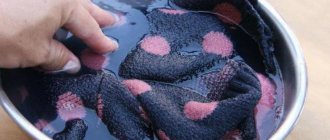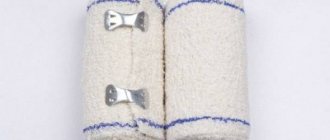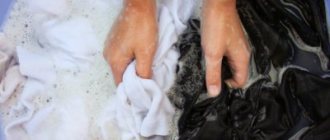Socks and underpants are the items that most people wash daily. Therefore, a logical question is the possibility of their simultaneous processing.
However, doubts immediately arise whether such a procedure is hygienic and whether it will lead to undesirable consequences. There are several points of view on this matter, each of which is completely justified.
Let's find out if you can wash socks and panties together in a washing machine.
How to machine wash together
If the family is large, it’s easy to pack enough socks and underpants into 2 full stashes for the car. If the family is small, the work is not related to the land, and the children are already grown up, the housewife has time to wash by hand. But in most homes, it's much more convenient to wash socks and underwear together.
Important Although today black socks usually do not fade, it is better to wear them with dark clothes. Whites should be washed with light colors.
To make this possible, do not let your socks get too dirty. If the dirt is crusty, shut up or lather the steam well before throwing into the drum. Separate cotton (this includes T-shirts, socks and cotton underwear) and synthetics (lace underwear, blouses and dresses with tulle and mesh lining, men's shirts, etc.). Wash the first batch on the “Cotton ECO” program, the second on the “Synthetics” program (the time is reduced by one and a half times, the drum rotates less intensively, spinning is 500-600 revolutions, or you can do without it at all).
Historically and intuitively, panties and socks are not put together, but modern technology, materials and washing products make it possible to put underwear in one place without harm to health. The only thing is that you need to separate things into cotton and synthetics, as well as by color, and pre-soak or soap socks that are too dirty.
How to wash in an automatic washing machine?
To prevent washing in a machine from negatively affecting the condition of your socks, you need to follow certain rules. They relate to selecting the optimal program, setting the temperature and choosing a detergent.
It is not necessary to wash each pair separately. For one-time loading, the following combinations are allowed: “white and light-colored items”, “black and dark blue socks”, “colored and plain dark ones”.
The general instructions are as follows:
- sort socks by color;
- clean them of debris and hair;
- turn the products inside out;
- load into the washing machine and wait until the cycle ends.
At what temperature?
The temperature you choose depends on the type of fabric the socks are made from.
Most often there are no labels on them. Manufacturers indicate washing recommendations on the label. Therefore, before throwing it away, you need to familiarize yourself with the care tips for specific products.
Cotton, synthetic and nylon socks are washed at a temperature no higher than 50-60 degrees. Products made from delicate fabrics, such as wool or silk, are processed in thirty-degree water.
In what mode (program)?
When choosing a washing program, you need to consider the type of fabric of your socks. If these are classic summer or terry products, then any mode will do. The main thing is that the temperature does not exceed 60 degrees.
Wool socks are washed using the “wool”, “delicate” or “gentle” wash program. It is recommended to turn off the spin or reduce the speed to 400.
Which detergent should you choose?
To wash socks in a machine, use regular laundry detergent.
If items made from delicate fabrics are to be processed, it is better to use a liquid detergent. It activates at low temperatures and rinses well.
It is important to consider the color of the fabric and the type of washing powder. Do not use products containing bleaches for processing colored items.
It is quite applicable to white socks.
When washing by hand, use laundry or any other soap. If you have stubborn stains, you can use folk remedies.
Why is this considered undesirable?
The proximity of panties and socks is considered undesirable, primarily for hygienic reasons and is associated with the danger of the spread of microscopic pathogens . According to scientific research:
- to completely destroy certain types of viruses and microbes, the water temperature must be at least 60 degrees;
- the fungus is completely killed by being in water with detergent at a temperature of 80 degrees and above for 20 minutes.
It is for these reasons that using gentle programs will not eliminate the problem of sanitation.
How to wash separately
Men's socks are usually dark, and many novice housewives think that it is enough to simply wash them in hot water on an aggressive cycle or soak them in a basin with bleach. All this will ruin the socks, they will lose their presentation, and good-looking socks under trousers or jeans is one of the little things that is important for the image.
We recommend: How to wash pens from clothes - useful tricks
How to properly care for your socks:
- The most obvious thing is that you need to change them every two days, and if your feet sweat, then every day. For foot hyperhidrosis, it is recommended to change 2-3 pairs per day.
- Heavy stains do not need to be scrubbed off - they should be thoroughly soaped and allowed to sit or soak in a warm solution (undiluted powder or stain remover should not touch the fabric).
- You should absolutely not use chlorine-containing bleaches - your socks will quickly become full of holes. Then how to wash white socks, for example? Socks tolerate only soap and oxygen stain remover. This is due to three factors: firstly, the cotton yarn (chlorine-resistant) in the socks is thin, and chlorine thins it even more; secondly, for elasticity and wear resistance, a synthetic thread is included in the fabric, but it does not withstand contact with bleach
- After soaking/soaping, you need to prepare a fresh solution: dilute it in warm water and thoroughly stir the soap shavings, gel or powder.
- Immerse the socks and rub lightly.
- Stir the solution in a circle from bottom to top, alternating clockwise and counterclockwise.
- Wring out the socks without twisting them.
- Fill with fresh water and rinse the socks thoroughly.
- Change the water until it becomes clear.
- Squeeze through a towel (without twisting) and hang to dry away from high temperatures.
With the machine, the process is simplified: you need to throw the soaked socks into the drum and turn on the Cotton ECO program: 40 degrees, 600-800 spin speeds, long wash, additional rinsing (optional). A long wash is important to disinfect the socks and remove all beads of sweat and skin particles.
How to care for your underwear:
Panties need to be changed every day. If a man does not sweat much, it is acceptable to wear a new pair every other day. Women are advised to use daily sanitary pads
This is especially important for delicate lace and semi-synthetic panties that cannot withstand hot water. Manufacturers recommend washing most modern models at 30-40 degrees. Children's, 100% cotton panties are best washed at 50-90 degrees (children's skin and mucous membranes in girls are more sensitive than in adults). Soaking is not the best method for underwear, especially silk - it is better to soap and rinse thoroughly
For natural silk, hand washing with shampoo or in the machine with other silk items using the same program and with a gel labeled “For silk” is recommended. Linen, especially lace, should be placed in the drum of the machine in a mesh bag or non-fading pillowcase. When washing by hand, it is not advisable to rub vigorously. Blood stains must be washed immediately and strictly in cool (about 30 degrees) water. It is advisable to wring out the panties by pressing them through a towel, and dry them by throwing them over a rope or hanging them by an elastic band on two clothespins with a soft spring (it’s easy to check by pinching your little finger - it shouldn’t hurt).
We recommend: Is it possible to wash a raincoat in a washing machine and how to do it correctly?
Whitening – what to use, rules, requirements
For washing white items, it is recommended to use boric acid. For 4 liters of water – 12 g. substances. It is allowed to replace a rather aggressive element with citric acid or juice squeezed from citrus slices. The duration of soaking socks is up to two hours. Soak items that are too dirty 2-3 times.
The use of preparations with bleaching properties is another way to obtain snow-white products. Vanish is popular among housewives; for stains that are too stubborn, it is recommended to use Antipyatnin.
The dosage is indicated on the label; exceeding the amount of the drug or combining several products is prohibited - such actions will not affect the quality of washing.
Some housewives use “Whiteness” to whiten clothes. You should not overuse the drug - the active components quickly corrode the fibers, which will affect the durability of the socks. “Whiteness” is used against stains that are not amenable to more gentle means.
For cotton materials, it is recommended to use chlorine-containing preparations. Step-by-step application of funds:
- Fill the container with 2 liters of warm water.
- Add a chlorine-containing preparation (50 g).
- Stir until the powder is completely dissolved.
- Add detergent (can be replaced with gel), you will need up to 100 g.
- Soak the products, rub a little with your hands, and leave overnight.
Whitening socks with folk remedies
In the morning, wash your socks as usual. There is no need for a washing machine - a concentrated chlorine-based product will cope with stains, contaminated soles, and a yellow tint.
Where did this come from"?
For a long time, these products were washed by hand in two ways:
- soaped, rubbed, and then washed off the dirt and foam from them with running water. We did this immediately after changing the linen, so as not to “accumulate” it in the basket;
- soaked with soap or powder in a basin and then rinsed. Heavily soiled items were pre-washed.
The first washing machines were harsh on these garments. They tore and pulled out the fabric, and socks and underpants, due to their small size, periodically “died” inside this miracle technique, clogging the drain. Therefore, many housewives still preferred hand washing these products.
With the advent of automatic washing machines, the situation has changed radically. Today, their functions allow you to regulate the processing temperature from 30 to 90 degrees and take into account the quality of the material. You don’t have to use the spin function, but simply drain the water. Therefore, panties and socks are often washed together, following certain rules.
Tricks for getting rid of pellets
Woolen products, in addition to numerous advantages, have disadvantages, one of them is the appearance of pills. It is recommended to wash wool on both sides, so defects appear on the outside, inside the products.
For preventive purposes, it is recommended to use laundry conditioners. The use of special preparations will extend the life of the yarn, prevent the threads from abrading and the appearance of pellets. The recommended washing mode is delicate. Do not choose a water temperature of more than 40 degrees.
Angora products are also often covered with numerous pellets. It is easy to avoid the appearance of defects - use warm liquid, avoid strong spinning, and use gentle washing preparations. Friction of angora fabric is also not welcome, so it is better to avoid hand washing.
Features of washing clothes from different materials
It is necessary to wash clothes as they become dirty. In case of sudden stains, send the set to the wash without waiting for the stains to dry. It is recommended to wash children's bedding 1-2 times a week, the same rule applies to pillowcases.
The higher the washing temperature, the faster and more efficiently the laundry disinfection process is carried out. However, for many types of fabric, high washing temperatures are contraindicated, so it is necessary to check the label on the specific product.
- Linen and cotton are best washed at 60 degrees.
- Bed linen in bright colors with large prints or patterns should be washed at a temperature of 30-50 degrees.
- When washing colored bed linen, use products specifically designed for brightly colored fabrics; you can even use regular shampoo.
- Linen with small stains must first be soaked in warm water with liquid laundry detergent for 1-2 hours, and then washed in a machine.
- Do not store the linen in a wrinkled form, it is quite difficult to iron, especially if the set is made of natural fabrics.
- When drying, use clothespins that are not too hard, try to catch them along the edges so as not to leave marks.
- Do not dry your laundry in the bright sun, the fabric will quickly fade.
The products can be washed either manually or using a washing machine. Be sure to read the information on the label before washing for the first time. It indicates the composition of the material and recommendations for washing it.
Lingerie
You must adhere to a number of other rules regarding washing bras and panties:
- Before washing, divide items into groups: synthetics, cotton, light, colored, dark and wash them strictly separately.
- Can be washed with any detergent, but preferably hypoallergenic.
- Be sure to wash the new set before wearing it.
- Hand washing is preferable for intimate items.
- Dry items on a line, hanging them carefully.
- Iron from the wrong side.
- Before putting the product in the washing machine, it must be washed to remove stains.
Washing a bra in a machine
Heels and toes are best washed by hand, warm water and plenty of soap. In the machine, for the same effect, you have to set the heating to 60°, the “Cotton” mode and soaking.
We suggest you find out what color things can be washed together
The disadvantage of the manual method is that it wastes personal time and effort; if you wash without gloves, it has a bad effect on the skin of your hands, and if you wash intensively, the fabric of your clothes wears out.
Before washing, it is better to soak the panties by gently rubbing them with detergent. Wait a few minutes and you can put it in a bowl of water.
Manual spinning is carried out extremely carefully. You cannot twist the underwear or stretch it. To remove excess moisture, press the product against the wall of the pelvis and apply pressure with your palm.
First you need to soak your underwear in warm water, then soap the stains with laundry soap. Leave the product overnight, then wash it by hand or in a machine.
For children's panties, it is recommended to use Eared Nanny soap: it is hypoallergenic, washes well and does not have an unpleasant odor.
The product is added to the powder compartment of the washing machine - 1 large spoon is enough. Then you need to select the appropriate mode and temperature. It is recommended to set it to double rinse to thoroughly rinse the product.
To keep things in good condition, you need to know how to wash underwear correctly. To do this, you should follow certain simple recommendations:
- Sort your clothes by category. It is prohibited to wash delicate, synthetic and items made from natural materials, which are characterized by higher wear resistance, at the same time. The same applies to the color of the product. Never load light and colored fabrics into the machine drum together.
- Strictly follow the instructions on the product label. If there is none, adhere to washing standards regarding the material from which the laundry is made.
- Wash intimate items immediately, without leaving them dirty for long periods of time.
- Use powder for baby clothes. It has good cleansing properties, is hypoallergenic and does not cause skin irritation.
- Wash items in special mesh bags, especially if they are bras with hooks and detachable straps. For these purposes, you can use a pillowcase.
- Do not load a full tank when washing in an automatic machine. This way, the products won’t wash well, and the powder won’t be completely washed out of the fabric.
- Using a pre-soak, make sure that the detergent is well dissolved in the water without leaving any grains.
Why should you wash new bedding?
So, many have realized that it is preferable to wash bedding than not wash it. Let's look at why:
- Before falling into the hands of the hostess, a new set of bed linen went through the stage of production, packaging and transportation. He could gather a whole battalion of bacteria on himself. In addition, if the kit was purchased not in a store, but at the market, it could have been touched by the wrong hands. Often sellers unwrap sets in front of buyers so that the latter can evaluate its softness and quality. Getting rid of traces of a previous life is as easy as shelling pears: the set needs to be washed.
- Linen made from natural fabrics requires even more careful attention before the first use, as it is a good bait for bed bugs and ticks.
- The solution used to treat new bed linen for presentation, although it is harmless, is best washed off.
- New bedding either does not smell of anything or has an unpleasant technical smell, which can also be easily eliminated with one wash.
- Before the first wash, laundry is usually hard; it becomes truly soft and airy after the first wash.
Is it necessary to do this?
Whether it is necessary to do this is up to each housewife to decide for herself. If there are no allergies and it is not intended for small children, and the above points do not bother you, the set does not need to be washed.
How to wash socks in a washing machine
Before automatic processing, hosiery items must be sorted by color. The washing mode is selected based on the material of manufacture. Socks that are not heavily soiled can be combined with other items of clothing.
Synthetic items that are too bright may fade during washing, which will negatively affect the condition of all products. If you wash them in a washing machine, you need to maintain the appropriate temperature conditions. It should not exceed 60 degrees. If the water is too hard, you can add a little baking soda to the washing powder.
Wool socks
They cannot be machine washed, otherwise pellets or other signs of deformation may appear. For manual processing of wool products, you need to use special detergents.
At the same time, you should not forget about the rinse aid. Socks should be washed at a water temperature of no more than 30 degrees. Twisting, soaking and rubbing items made from delicate materials is strictly prohibited. Knowing how and what to wash wool socks with, you can avoid many problems. If everything is done correctly, the products will become soft after drying.
Thermal socks
The products are popular among active lifestyle enthusiasts, tourists and athletes. This is due to their ability to maintain dryness and warmth, remove moisture and reduce friction. If washed incorrectly, products lose their beneficial properties. Thermal socks cannot be dry cleaned.
When washing by hand, the water should have a temperature not exceeding 40 degrees. When washing, you should select the delicate mode. In this case, the optimal temperature varies from 30 to 35 degrees. You will have to give up the spin cycle. For processing, it is strictly forbidden to use stain removers and bleaches that contain chlorine.
We recommend:
How to wash a Uniclo down jacket at home - basic rules
Washing light-colored socks
It is quite difficult to restore the original freshness of such products. Yellow and gray stains appear on them. To avoid such problems, it is not recommended to postpone washing light-colored socks. Old stains are much more difficult to get rid of than fresh ones.
When machine washing, you can use ammonia, ammonia or dishwashing detergent. Socks are pre-soaked. If there is severe contamination, you need to add a little lemon juice to the solution. Stains originating from the inner surface of the shoe are removed with table vinegar.
White socks made from cotton can be boiled. To carry out this procedure, you will need a small old saucepan. You need to add water, soda ash and laundry soap to it. The prepared mixture is placed on low heat and brought to a boil. After the pan has cooled, remove the socks and rinse in clean water.
About thermal socks
There is no better product for athletes, tourists, lovers of an active life, and simply for everyday wear, especially in cold weather, than thermal socks. They reduce friction when walking, remove moisture from the skin, and maintain comfortable warmth and dryness. And, again, it is incorrect washing that will deprive these wonderful socks of their wonderful properties, turning them into ordinary hosiery. To prevent this from happening to your property, follow the recommendations from the table on how to wash thermal socks:
| Type of wash | Without losing their properties, thermal socks can be washed both by hand and in a washing machine, selecting the delicate cycle. |
| Water temperature | For hand washing, the normal temperature is 40 degrees, for machine washing - 30-35 degrees. |
| Detergents | Avoid powders containing chlorine and other harsh bleaches and stain removers. For hand washing, regular soap is suitable. Of course, dry cleaning is contraindicated for thermal socks. |
| Spin | When hand washing such socks, you need to shake them vigorously several times and then squeeze them between your palms, never twisting them. In a washing machine, it is better to use the no-spin mode, or set it to the minimum values - no more than 200 revolutions. |
| Drying | Thermal socks are dried at normal room temperature. Be careful - drying on a radiator, in a dryer, as well as machine drying will inevitably lead to the loss of all thermal properties. |
| Ironing | Ironing thermal socks is prohibited for the same reason. |
If you follow all the recommendations, thermal socks will serve you for a long time. Improper washing will ruin the structure of the material. The best is hand washing.
Do not turn on the spin cycle in the washing machine. Read the label carefully. In order not to deprive thermal socks of their properties, you need to wash them correctly
Features of automatic socks washing
Washing socks in a washing machine has its own characteristics. There is a reason to talk about these features, because washing with them in mind will be simple, will not spoil things, and may even give you aesthetic pleasure.
- It is better to wash socks in a washing machine separately from other items. We mean that it is better to place socks in a special laundry bag so that they do not get lost somewhere in a jeans leg or in another item.
- When deciding how to wash socks, inspect them, turn them inside out, shake out coarse dirt (coarse sand, pebbles, glass, etc.), and also remove dry blades of grass and thorns from the socks. Solid large debris can even damage the drum of the washing machine, and stuck blades of grass and thorns simply cannot be washed.
- Set the washing mode correctly depending on what fabric the socks are made of and the items you wash with them.
- Do not put socks with other things if the drum is loaded to capacity. In this case, the socks will most likely not stretch.
- When washing, add conditioner, and also try to dry your socks outside, so they will smell fresh.
Washing white socks and stockings
How to quickly wash white socks? The question is really difficult. While the socks are in the packaging they are light, if you wear them once, they lose color and it is almost impossible to return it. Traces of sweat, dirty scuffs from shoes, dust and street dirt. Here is an incomplete list of stains that can be easily detected on once snow-white socks. The ones you only wore once. If you want to throw away these socks after the first wear, don’t rush, you might be able to freshen them up.
How to wash white socks? Experts have specific recommendations on this matter.
If you plan to wash socks or baby socks in the washing machine, lather them with soap first and let them sit. After about 20 minutes, feel free to throw them in the washer with other white clothes. Don’t know how to quickly wash white socks in the washing machine? Throw a few tennis balls into the machine; they will wash your socks much better. White socks wash much better if you put them in a plastic bag with a cleaning solution before automatic washing. To prepare the solution, pour 60 ml of dishwasher detergent into a glass, and then add water to the brim - the cleaning solution is ready. Soak the socks in the solution for 30 minutes and then wash. You can solve the problem of how to wash white socks from dirt if you soak them before washing with a glass of sodium bicarbonate or soda ash, and then wash the socks as usual. The best solution to the question of how to wash white socks is, of course, a high-quality stain remover
However, use such products with caution when dealing with socks made from finicky fabrics.
To summarize, we note that, in general, the question of how to wash socks seems stupid to many, to put it mildly.
Washing rules
Doctors recommend completely updating your hosiery after starting treatment. However, it takes about six months until complete recovery, and not everyone can afford to buy a new pair every day.
From the moment therapy starts, the fungus loses its activity, so it is enough to limit yourself to proper washing of socks.
Basic recommendations:
- Do not store worn socks in the dirty laundry basket. They should be washed immediately after your shift.
- Do not wash socks with other items of clothing.
- It is prohibited to process the socks of a sick person and a healthy person in the same wash cycle.
- After completion of treatment, you must follow the washing rules applicable for illness for another 3 months.
Following these recommendations will help prevent the spread of infection and infect your household.
Preference is given to cotton and bamboo products. Synthetics do not allow moisture to pass through well, which is a favorable environment for the proliferation of pathogenic flora.
How to wash separately
Men's socks are usually dark, and many novice housewives think that it is enough to simply wash them in hot water on an aggressive cycle or soak them in a basin with bleach. All this will ruin the socks, they will lose their presentation, and good-looking socks under trousers or jeans is one of the little things that is important for the image.
How to properly care for your socks:
- The most obvious thing is that you need to change them every two days, and if your feet sweat, then every day. For foot hyperhidrosis, it is recommended to change 2-3 pairs per day.
- Heavy stains do not need to be scrubbed off - they should be thoroughly soaped and allowed to sit or soak in a warm solution (undiluted powder or stain remover should not touch the fabric).
- You should absolutely not use chlorine-containing bleaches - your socks will quickly become full of holes. Socks tolerate only soap and oxygen stain remover. This is due to three factors: firstly, the cotton yarn (chlorine-resistant) in the socks is thin, and chlorine thins it even more; secondly, for elasticity and wear resistance, a synthetic thread is included in the fabric, but it does not withstand contact with bleach
- After soaking/soaping, you need to prepare a fresh solution: dilute it in warm water and thoroughly stir the soap shavings, gel or powder.
- Immerse the socks and rub lightly.
- Stir the solution in a circle from bottom to top, alternating clockwise and counterclockwise.
- Wring out the socks without twisting them.
- Fill with fresh water and rinse the socks thoroughly.
- Change the water until it becomes clear.
- Squeeze through a towel (without twisting) and hang to dry away from high temperatures.
With the machine, the process is simplified: you need to throw the soaked socks into the drum and turn on the Cotton ECO program: 40 degrees, 600-800 spin speeds, long wash, additional rinsing (optional). A long wash is important to disinfect the socks and remove all beads of sweat and skin particles.
How to care for your underwear:
Panties need to be changed every day. If a man does not sweat much, it is acceptable to wear a new pair every other day. Women are advised to use daily sanitary pads
This is especially important for delicate lace and semi-synthetic panties that cannot withstand hot water. Manufacturers recommend washing most modern models at 30-40 degrees. Children's, 100% cotton panties are best washed at 50-90 degrees (children's skin and mucous membranes in girls are more sensitive than in adults). Soaking is not the best method for underwear, especially silk - it is better to soap and rinse thoroughly. For natural silk, hand washing with shampoo or in the machine with other silk items using the same program and with a gel labeled “For silk” is recommended. Linen, especially lace, should be placed in the drum of the machine in a mesh bag or non-fading pillowcase
When washing by hand, it is not advisable to rub vigorously. Blood stains must be washed immediately and strictly in cool (about 30 degrees) water. It is advisable to wring out the panties by pressing them through a towel, and dry them by throwing them over a rope or hanging them by an elastic band on two clothespins with a soft spring (it’s easy to check by pinching your little finger - it shouldn’t hurt).
For natural silk, hand washing with shampoo or in the machine with other silk items using the same program and with a gel labeled “For silk” is recommended. Linen, especially lace, should be placed in the drum of the machine in a mesh bag or non-fading pillowcase. When washing by hand, it is not advisable to rub vigorously. Blood stains must be washed immediately and strictly in cool (about 30 degrees) water. It is advisable to wring out the panties by pressing them through a towel, and dry them by throwing them over a rope or hanging them by an elastic band on two clothespins with a soft spring (it’s easy to check by pinching your little finger - it shouldn’t hurt).
Washing category “underwear”
The “underwear” category includes bras, panties, swimsuits, T-shirts, corsets, pajamas, shirts, socks, negligees, nylon tights, etc. Lingerie comes in different types: for everyday wear, shapewear, thermal, erotic, sports, etc. The correct washing method determines how well, thoroughly the care will be carried out, and how careful the care will be.
After all, it is important that the laundry remains in its original form after washing.
Rules for washing underwear:
Every person should know that after purchasing underwear, it is necessary to wash it. Firstly, these are hygiene rules, and secondly, before the linen reached the display case, it went through several stages of processing, from transportation in the form of fabric from the production workshop to the sewing workshop, then it was recut, sewn, and put into boxes. No one knows how many hands touched him and how much dust there was in them. But one thing is clear: you can’t put on such underwear right away.
- Before you wash a particular item, check the label to see what washing and drying settings you can use. Everything is clearly stated on the label of the new product.
- Try to wash your underwear as it becomes dirty, namely every day, especially if they have received complex stains from deodorant, spilled something, etc. After all, stains that are difficult to remove are difficult to remove and you will have to resort to chemicals, so to speak, strong agents.
- Underwear must be sorted before washing: white, colored and black items are washed separately. The texture of products is no exception to sorting, namely: lace, cotton, satin, synthetics, decorative items with stones and rhinestones must be washed separately and on a delicate cycle.
- Washing products are carefully selected. It is better to wash white items with powders containing bleaching components. Colored laundry is washed with gentle liquid detergents.
- Take an individual approach to this question: wash your underwear by hand or by machine. It is best to wash delicate items by hand.
- If you soak laundry, be sure to stir the product with water so that it dissolves, only then proceed to soaking and processing it.
Rules for drying underwear
- In order not to lose the shape of the laundry, it must be dried correctly, otherwise everything will go down the drain and the product will become deformed. Linen should be dried in a well-ventilated area; direct sunlight should be avoided.
- Silk, elastic and viscose panties, tops and negligees should not be dried in a radiator or close to a heat source. Ironing must be done in a slightly damp state.
- Linen made from cotton fabric can be dried on a line, and synthetic and silk items should preferably be laid out on terry towels, this way they can be protected from deformation.
- It is better to dry thermal underwear on hangers.
- The bra is also dried on a horizontal surface in a straightened form.











